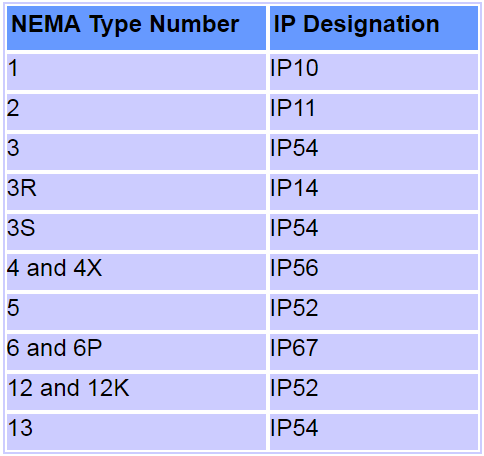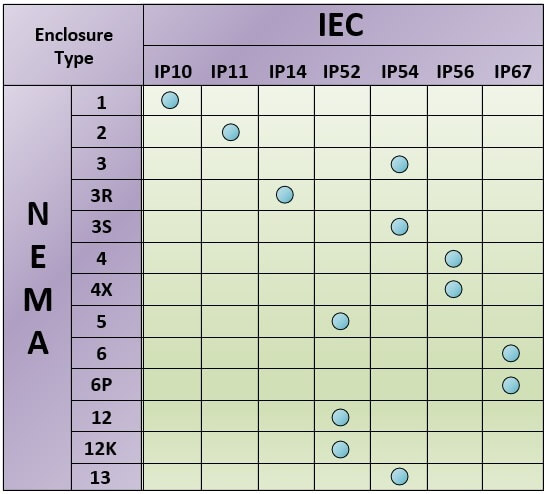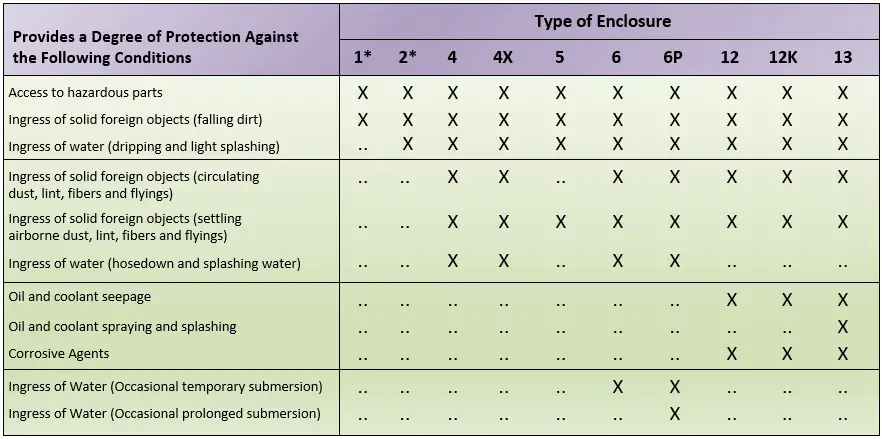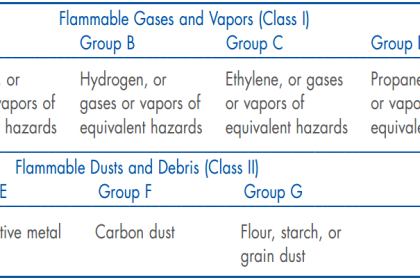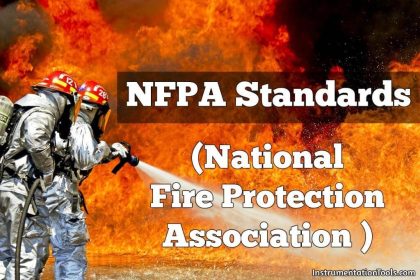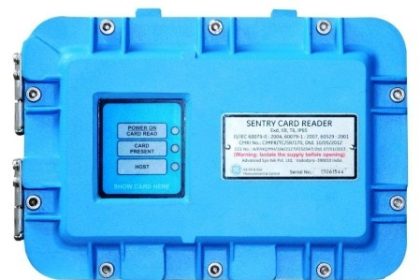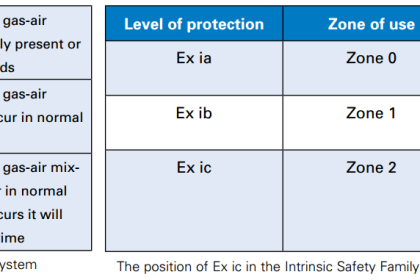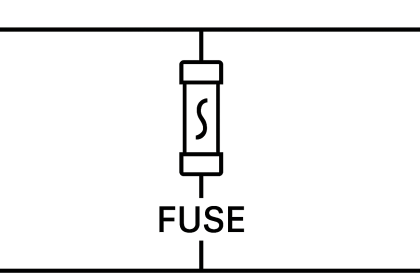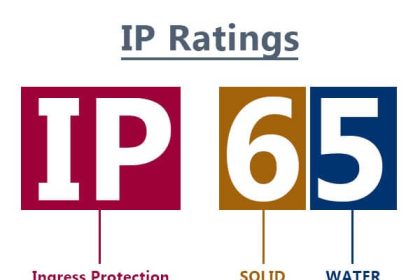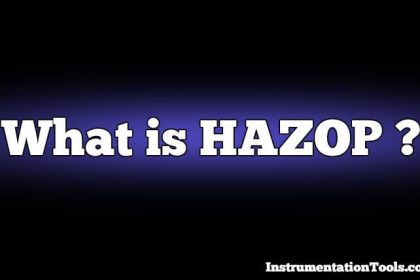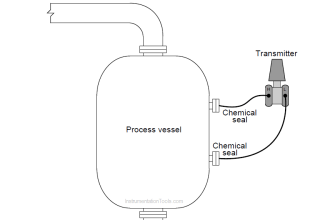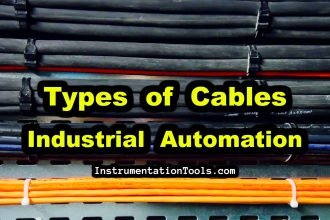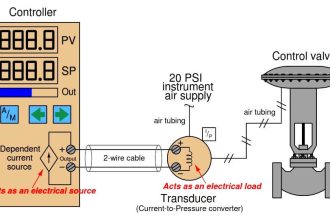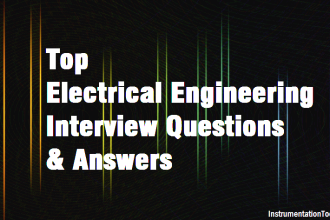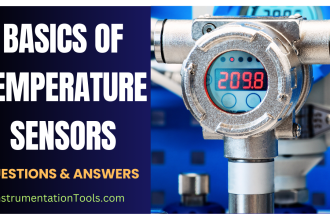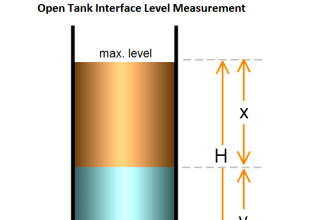It is more common to apply a NEMA (National Electrical Manufacturers Association) standard NEMA 250-1997 to the environment protection of equipment.
The standard is less systematic than IEC60529 but is neither the less useful as it deals with additional issues such as ice formation etc.
NEMA Enclosure Types Standards
Type 1 – Indoor use to provide protection against falling dirt.
Type 2 – Indoor use to provide protection against falling dirt, and against dripping and light splashing of liquids.
Type 3 – Indoor or outdoor use to provide protection against falling dirt, rain, sleet, snow, and windblown dust; and that will be undamaged by the external formation of ice on the enclosure.
Type 3R – Indoor or outdoor use to provide protection against falling dirt, rain, sleet, and snow; and that will be undamaged by the external formation of ice on the enclosure.
Type 3S – Outdoor use to provide protection against falling dirt, rain, sleet, snow, and windblown dust; and in which the external mechanism(s) remain operable when ice laden.
Type 4 – Outdoor use to provide protection to personnel against falling dirt, rain, sleet, snow, windblown dust, splashing water, and hose-directed water; and that will be undamaged by the external formation of ice on the enclosure.
Type 4X – Outdoor use to provide protection against falling dirt, rain, sleet, snow, windblown dust, splashing water, hose-directed water, and corrosion; and that will be undamaged by the external formation of ice on the enclosure.
Type 5 – Indoor use to provide protection against falling dirt; against settling airborne dust, lint, fibers, and flyings; and to provide protection against dripping and light splashing of liquids.
Type 6 – Outdoor use to provide a degree of protection against falling dirt; against hose-directed water and the entry of water during occasional temporary submersion at a limited depth; and that will be undamaged by the external formation of ice on the enclosure.
Type 6P – Outdoor use to provide protection against falling dirt; against hose-directed water and the entry of water during prolonged submersion at a limited depth; and that will be undamaged by the external formation of ice on the enclosure.
Type 12 – Indoor use to provide protection against falling dirt; against circulating dust, lint, fibers, and flyings; and against dripping and light splashing of liquids.
Type 12K – Same as Type 12 with knockouts.
Type 13 – Indoor use to provide protection against falling dirt; against circulating dust, lint, fibers, and flyings; and against the spraying, splashing, and seepage of water, oil, and non-corrosive coolants.
The above Type classifications also imply a protection to personnel from dangerous voltages (up to 1000V), and that outdoor rated enclosures can also be used indoors.
The following table provides a conversion from NEMA to IP although not in the reverse direction as the NEMA protection level is matched against an equal or higher IP level.
